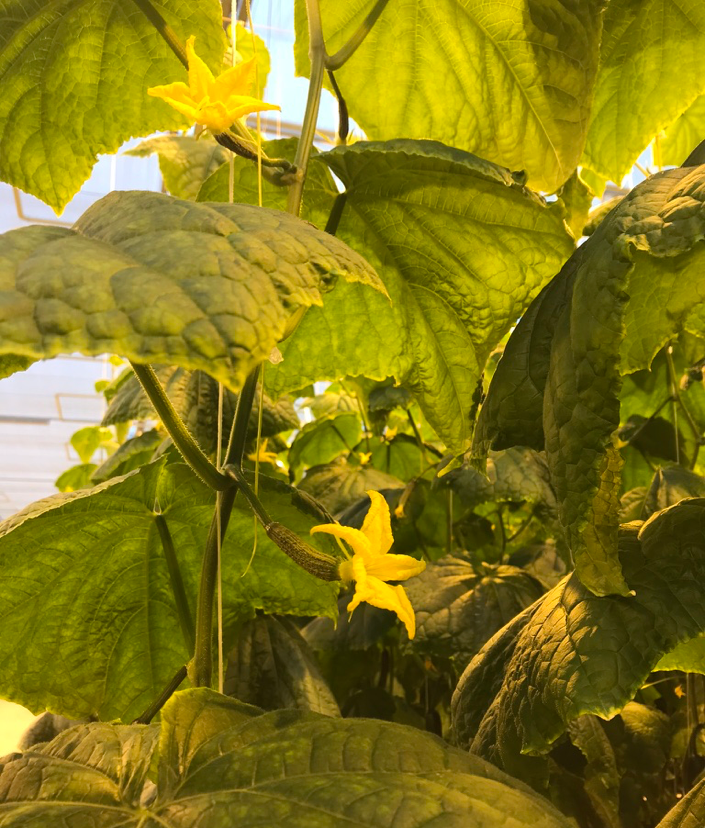
The Leaf Vapor Pressure Deficit (VPD)
The concept of vapor pressure deficit, or VPD, exists.
The Leaf Vapor Pressure Deficit (VPD) is a parameter that quantifies the connection between a plant and the humidity level in the air. It signifies the variance between the moisture present on the leaf's surface and the humidity in the surrounding atmosphere.
The higher the Vapor Pressure Deficit (VPD), the easier it is for water to evaporate. Let's explain the impact on plants:
When there is a high vapor pressure deficit, which means that the humidity around the leaf surface is low, and the plant cannot transpire enough water to meet its transpiration requirements, this can result in the plant wilting, drying out, and suffering damage.
When the vapor pressure deficit is too low, indicating that the surrounding air is excessively humid and transpiration from the leaf surface is minimal, this can result in insufficient water and nutrient transport within the plant. It can also lead to reduced cooling capacity and potential harm to the plant under extremely high temperatures.
Certainly, during the summer season, ventilation and cooling systems are employed to maintain not only the right temperature but also the humidity, which is essential for the proper functioning of plants.
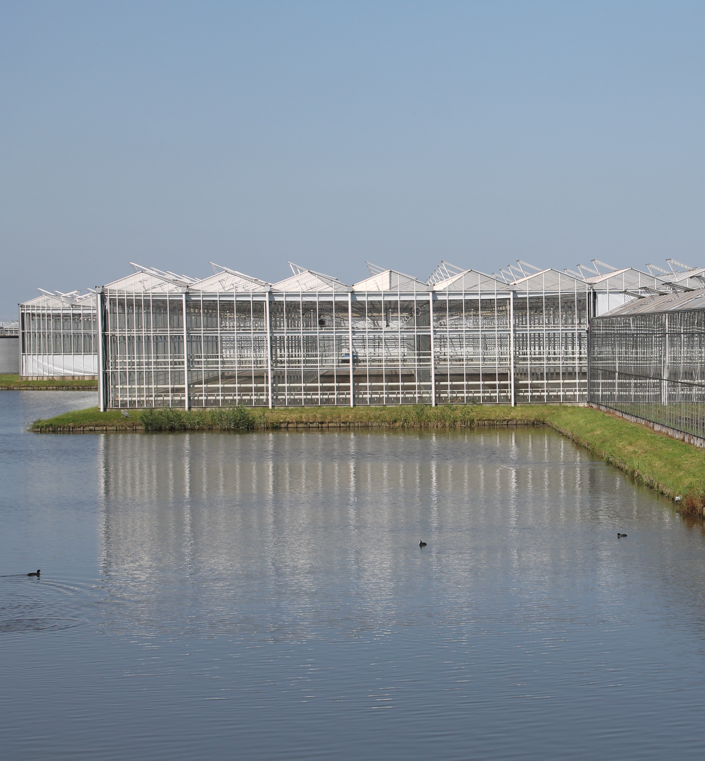
Ventilation System

When the motor is turned on, the drive and distribution shafts rotate. This causes the racks to extend, moving the rods, which in turn raise and lower the window.
This method allows for the ventilation of a greenhouse of any size.
In all areas of the greenhouse, the opening vents cover up to 35% of the greenhouse roof area, ensuring the intake of the necessary volume of external air. The angle of the vent openings can be adjusted to a maximum of 50°, and the size of the ventilation opening is automatically controlled based on air temperature, wind speed, and precipitation.

The ventilation and air circulation system in the greenhouse impacts following:
uniform distribution of temperature
reduces overheating of plants
stimulates plants' physiological processes
eliminates zones with elevated humidity during the winter-spring and autumn-winter periods when natural ventilation through vents is not possible or less effective. Most importantly, this system allows plants to experience conditions similar to those in nature
Furthermore, additional systems can be incorporated into the greenhouse as required to assist in cooling the air and managing humidity levels for both the atmosphere and the plants.
When choosing between high-pressure and low-pressure systems, we strongly recommend high-pressure systems. Low-pressure systems produce larger water droplets that can potentially lead to plant diseases.
The misting system consists of a high-pressure pump (up to 100 mbar) and a network of pipes with nozzles.
These nozzles are generating fine droplets with a diameter of less than 10 μm. This process of moisture evaporation from the air elevates its relative humidity, positively influencing plant transpiration and fostering robust growth, development, and higher yields.
ROOF SPRINKLING
Roof sprinkling is another technique for cooling a greenhouse. This system involves the use of sprinklers positioned on the greenhouse roof. During hot periods, a layer of water is applied to the greenhouse roof using these sprinklers. Cooling is achieved through the evaporation of water from the glass roof, and it also introduces cooler, moist air into the greenhouse.
In this system, a continuous water supply must be available on the roof for effective cooling. When the water evaporates, the cooling effect stops. There are several nuances associated with this system:
First of all, when water evaporates, any dirt in the water can become encrusted on the roof, making it challenging to clean.
Secondly, this system does not raise the humidity levels inside the greenhouse.
Thirdly, it is essential to drain the entire system of water and refrain from using it until warmer weather returns before the onset of frost.
In general, the use of roof sprinklers can lead to a decrease in the greenhouse's internal temperature by as much as 5°C.

To sum it up, one of the most budget-friendly and efficient cooling methods is the presence of plants. The greater the leafy canopy of the plants, the cooler the greenhouse environment becomes. Plant transpiration serves as a natural form of air conditioning. Surprised? Give it a try! Compare a greenhouse with thriving plants to one without, and you'll immediately sense the contrast.
We'd like to assist you in choosing
an effective system that is tailored to your specific needs
CONTACT NOW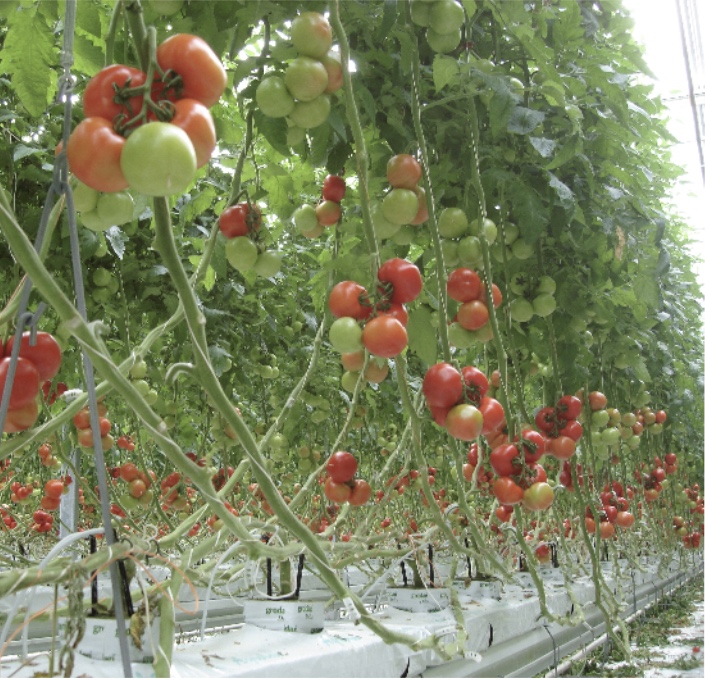
VAPOR PRESSURE DEFICIT
Vapor Pressure Deficit (VPD) is a concept used to describe the relationship between a plant and the humidity of the surrounding air. The VPD of a plant's leaf is the difference between the moisture on the surface of the leaf and the moisture in the surrounding air.
The higher the vapor pressure deficit, the easier it is for water to evaporate. Let's explain its impact on the plant:
The higher the vapor pressure deficit (VPD), the easier it is for water to evaporate. Let's delve into its impact on the plant:
When the vapor pressure deficit (VPD) is high, meaning the air humidity is low relative to the leaf surface, and the plant cannot evaporate enough water to meet its evaporative demand, it can lead to plant wilting, dehydration, and potential damage to the plant.
When the VPD is too low, the surrounding air is so saturated with moisture that evaporation from the leaf surface is virtually non-existent. This can result in inadequate water and nutrient transport within the plant. Additionally, it may lead to reduced cooling and potential plant damage at very high temperatures.
For the proper functionality of plants it's crucial to maintain not only an appropriate temperature but also the right humidity level. During the summer, ventilation and cooling systems are utilized to achieve this balance.
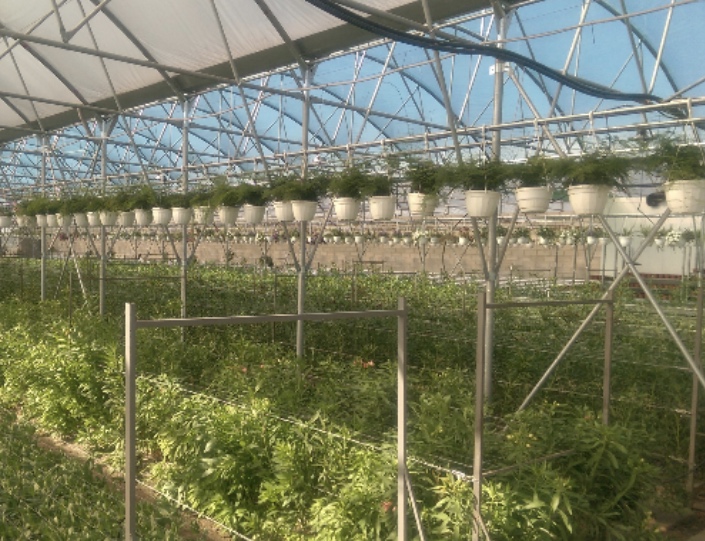
VENTILATION SYSTEM
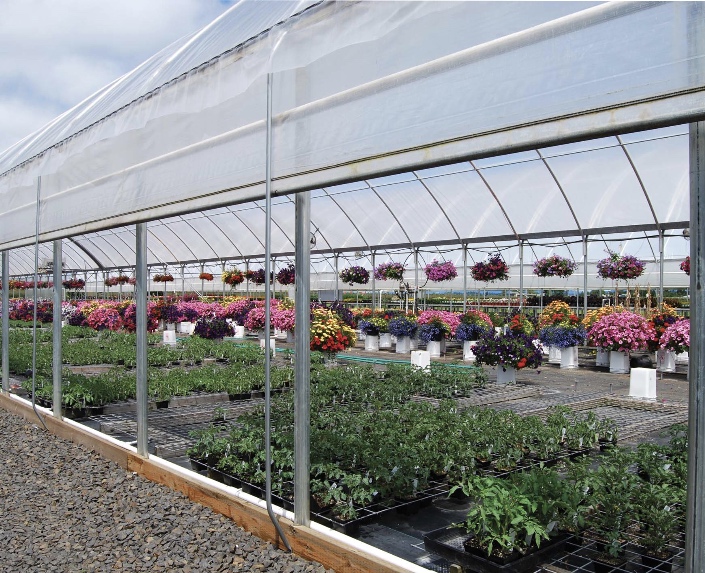
THE GREENHOUSE VENTILATION AND AIR RECIRCULATION SYSTEM PROVIDES:
Even distribution of temperature layers.
Reduces plant overheating.
Stimulates physiological processes in plants.
. Eliminates zones of high humidity during the winter-spring and autumn-winter periods when natural ventilation through vents is impossible or ineffective. Importantly, this system allows plants to feel as if they are in their natural habitat
Furthermore, greenhouses can be equipped with additional systems as needed, which help to cool the air and regulate humidity for both the air and the plants.
When choosing between high-pressure and low-pressure systems, we strongly recommend the high-pressure option. Low pressure produces larger droplets, which can lead to plant diseases.
The mist system consists of a high-pressure pump (up to 100 mbar) and a piping system with nozzles that create a fine mist (droplet diameter less than 10 micrometers). The evaporation of moisture from the air increases its relative humidity, which positively affects plant transpiration and promotes healthy growth, development, and yield increases.

In conclusion, it's noteworthy that one of the most cost-effective and efficient cooling methods is the plants themselves. The more foliage the plants have, the cooler the greenhouse. Plant transpiration acts as nature's best air conditioning. Surprised? Check for yourself! Visit a greenhouse filled with plants during summer, and then one without any plants. You'll immediately feel the difference!
Looking for the right solution for your greenhouse? Let us to offer optimal solutions for any challenge presented!
We will help you select a high-quality and effective system that is perfectly suited for you
Get in touch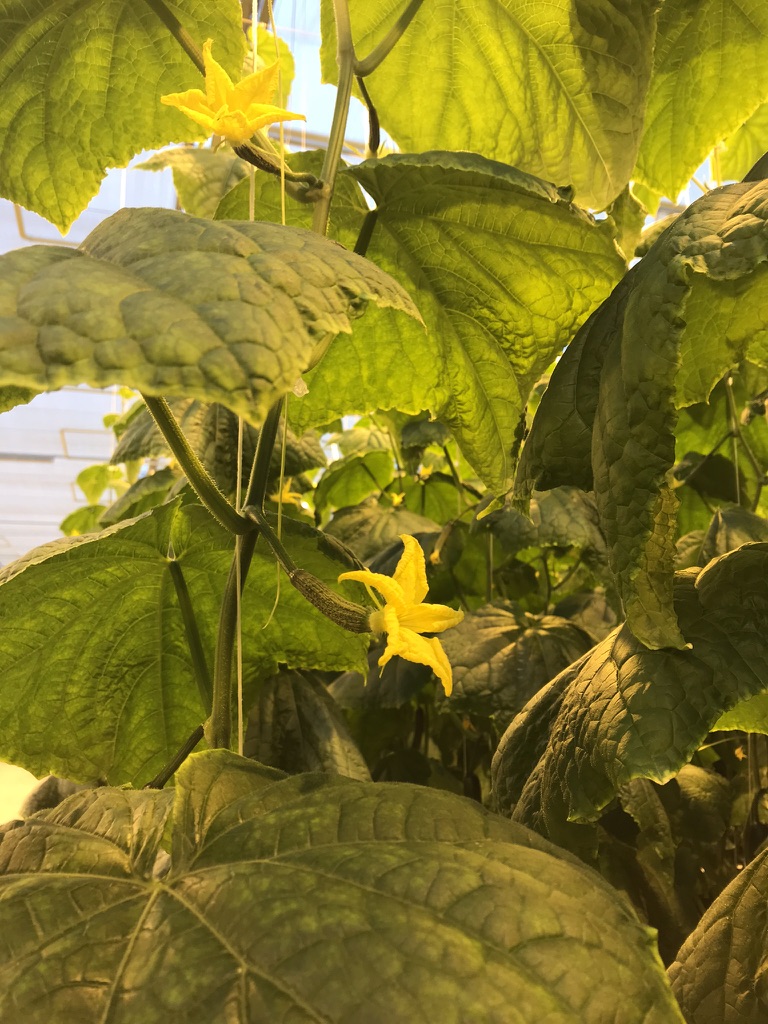
VAPOR PRESSURE DEFICIT
Vapor Pressure Deficit (VPD) is a concept used to describe the relationship between a plant and the humidity of the surrounding air. The VPD of a plant's leaf is the difference between the moisture on the surface of the leaf and the moisture in the surrounding air.
The higher the vapor pressure deficit, the easier it is for water to evaporate. Let's explain its impact on the plant:
The higher the vapor pressure deficit (VPD), the easier it is for water to evaporate. Let's delve into its impact on the plant:
When the vapor pressure deficit (VPD) is high, meaning the air humidity is low relative to the leaf surface, and the plant cannot evaporate enough water to meet its evaporative demand, it can lead to plant wilting, dehydration, and potential damage to the plant.
When the VPD is too low, the surrounding air is so saturated with moisture that evaporation from the leaf surface is virtually non-existent. This can result in inadequate water and nutrient transport within the plant. Additionally, it may lead to reduced cooling and potential plant damage at very high temperatures.
For the proper functionality of plants it's crucial to maintain not only an appropriate temperature but also the right humidity level. During the summer, ventilation and cooling systems are utilized to achieve this balance.
VENTILATION SYSTEM
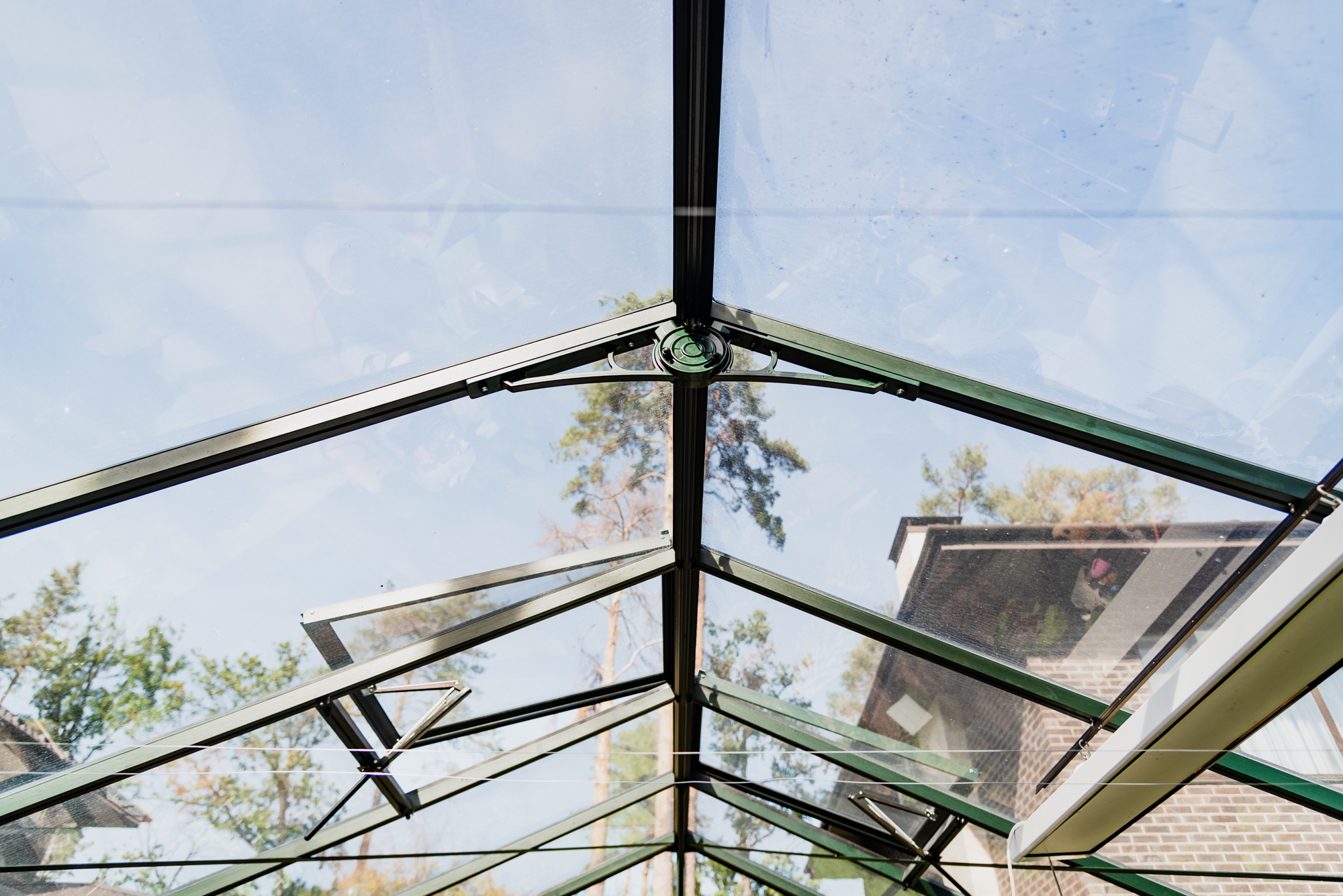
THE GREENHOUSE VENTILATION AND AIR RECIRCULATION SYSTEM CREATES:
Reduces plant overheating,
Stimulates their physiological processes,
Eliminates zones of high humidity during the winter-spring and autumn-winter periods when natural ventilation through vents is not possible or is inefficient. Importantly, this system allows plants to feel as though they are in their natural habitat.
Additionally, the greenhouse can be equipped with extra systems as needed, which assist in cooling the air and regulating both air and plant humidity.
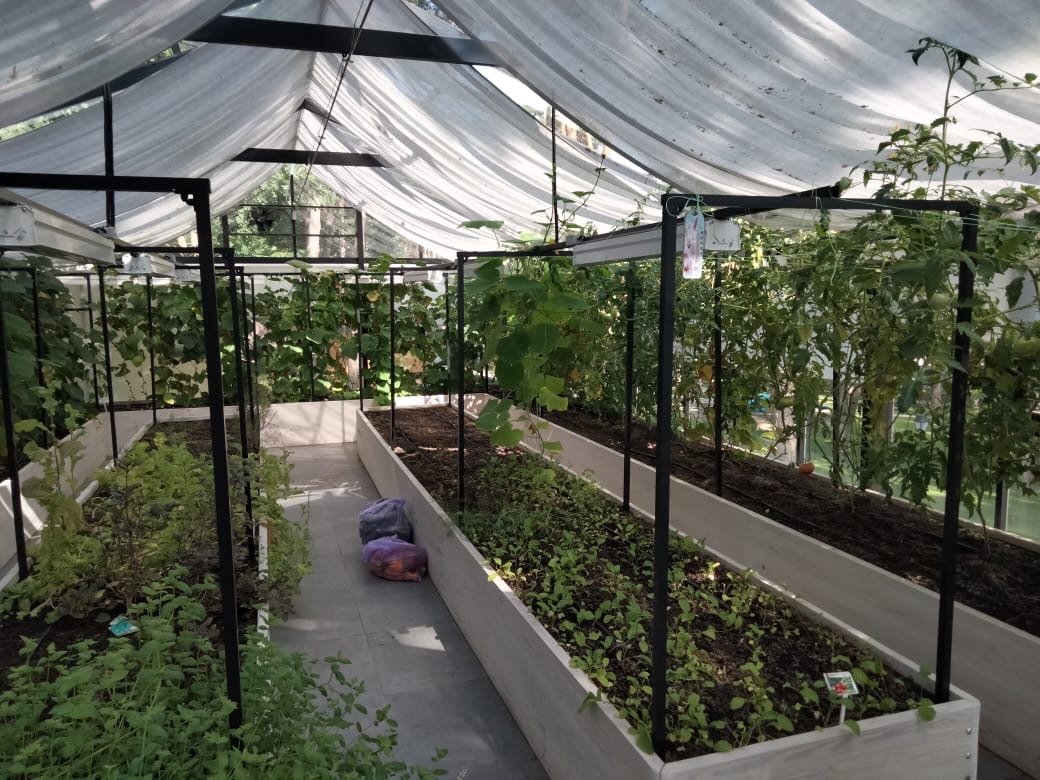
In conclusion, it's worth noting that one of the most cost-effective and efficient cooling methods is the plants themselves. The more plant foliage, the cooler the greenhouse becomes. Plant transpiration is nature's best air conditioning. Surprised? Give it a try! Visit a greenhouse filled with plants during the summer, and then one without plants. You'll feel the difference immediately!
Looking for the right solution for your greenhouse? We're here to assist you in selecting a high-quality and effective system that perfectly suits your needs. Give us a call!